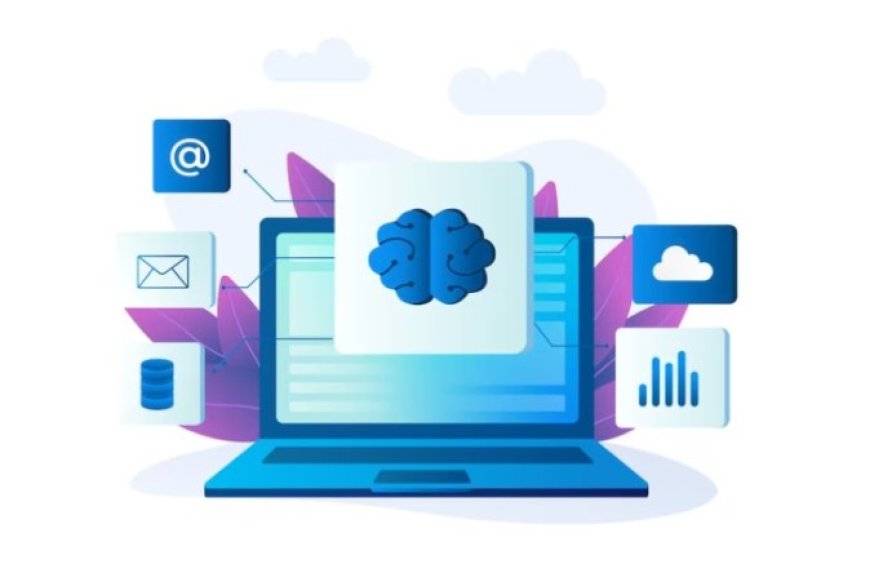The Role of Computer Vision in Data Science
The role of computer vision in data science involves leveraging visual data, image analysis, and deep learning techniques to extract insights

Let's start by understanding two important things: computer vision and data science. Computer vision is like giving computers the ability to "see" and understand images and videos, much like we do. Data science is all about using data to find useful information and make smart decisions.
Now, here's the interesting part: computer vision is becoming super important in the world of data science. With the explosion of images and videos on the internet, there's a ton of visual data out there. Think of all the pictures on social media or security cameras recording footage. This is where computer vision comes in. It helps data scientists make sense of all these images and videos.
For example, it can help spot trends in customer behavior by analyzing their photos on social media, or it can be used in medical imaging to detect diseases. So, computer vision is like the detective that helps data scientists uncover valuable insights from visual data. This makes it a big player in the world of data science, and it's only going to get more important in the future.
Challenges in Handling Visual Data:
-
Visual data, like images and videos, can be huge and unwieldy. It's like having a giant jigsaw puzzle with tons of tiny pieces. We need to find a way to put all those pieces together.
-
These types of data don't always follow the same neat patterns as numbers or text. They're more like abstract art, and we need to teach computers to understand this abstract language.
-
Plus, there can be errors in visual data, like blurry photos or shaky videos. It's like trying to read a smudged recipe - you might misinterpret the ingredients.
The Need for Insights from Images and Videos:
-
In our data-hungry world, we don't want to miss out on valuable information just because it's in the form of images or videos. It's like having a treasure chest, but the key to unlock it is a mystery.
-
Many industries, like healthcare, agriculture, and self-driving cars, need data-driven insights from visual information. It's like having a map when you're exploring unknown territory - it makes things safer and more efficient.
-
People want smart apps that can recognize faces in photos, scan barcodes, or even tell you the breed of your dog by looking at a picture. It's like having a digital assistant who can see and understand the world around you.
Handling visual data is like solving a big, intricate puzzle, and the demand for insights from images and videos is growing rapidly across various fields. We need to find smart solutions to make sense of this visual data and use it to improve our lives.
What is Computer Vision?
Computer vision is a branch of artificial intelligence (AI) that focuses on enabling computers to understand, interpret, and make sense of visual information. It involves teaching computers to perform tasks that typically require human vision. These tasks can range from basic things like recognizing objects in an image to more advanced tasks like tracking movements, reading text, or even identifying emotions on people's faces.
What is the Role of Computer Vision in Data Science?
When we talk about the role of computer vision in data science, it's like looking at how our eyes and brain work together to make sense of the world. In this case, computer vision is the "eyes" of the computer, and data science is like the "brain" that processes and interprets what those "eyes" see.
Computer vision is all about teaching computers to see and understand visual data, like images and videos. Think of it as the technology that enables computers to recognize objects, people's faces, handwriting, and even emotions in pictures and videos. Now, let's dive into how it plays a crucial role in data science.
Computer vision plays a crucial role in data science by helping us make sense of visual data. In simple terms, computer vision is like giving computers the ability to see and understand the world just like we do with our eyes. It processes images and videos to extract meaningful information. In this article, we'll explore how computer vision is used in data science and how it processes visual data for various applications.
Computer Vision Processes Visual Data for Data Science Applications
Computer vision processes visual data in a series of steps, which can be simplified as follows:
-
Acquisition: The first step is to obtain visual data. This can be through cameras, scanners, or any device that captures images or video.
-
Preprocessing: Once the data is collected, it needs to be cleaned and prepared for analysis. This step includes tasks like resizing images to a standard format, enhancing image quality, and removing noise or irrelevant information.
-
Feature Extraction: In this step, the computer vision system identifies key characteristics in the visual data. These features can include edges, colors, textures, shapes, and more. It's like how our eyes recognize the outlines and colors of objects.
-
Feature Representation: The features extracted are transformed into a format that a computer can understand. This is usually a series of numbers that represent the characteristics of the visual data.
-
Modeling and Analysis: This is where the real magic happens. Machine learning and deep learning algorithms are applied to the extracted and transformed data to recognize patterns, make predictions, or perform specific tasks. For example, a model might be trained to recognize cats in images.
-
Post-processing: After the model's analysis, the results are often refined. This can involve filtering out false positives, grouping objects, or smoothing out trajectories in video analysis.
-
Visualization and Reporting: The final step is presenting the results in a human-readable format. This could be as simple as tagging objects in an image or generating a report with insights.
Computer vision can handle a wide range of visual data, from static images to real-time video streams. The key is to train models that can recognize and understand what's in the data and then use this knowledge to provide valuable insights or perform specific tasks.
Challenges in Computer Vision for Data Science
While computer vision is a powerful tool, it comes with its own set of challenges:
-
Data Quality: The accuracy of computer vision models depends on the quality of the training data. Noisy or biased data can lead to incorrect results.
-
Complexity: Computer vision tasks can be quite complex, especially in real-world scenarios with varying lighting conditions, object orientations, and backgrounds.
-
Computation Power: Training and running sophisticated computer vision models can be computationally intensive, requiring powerful hardware.
-
Interpretability: Understanding why a model makes a particular prediction can be challenging, which is a critical concern in applications like healthcare.
-
Privacy and Ethics: The use of computer vision in surveillance and facial recognition has raised concerns about privacy and ethical issues.
-
Data Labeling: Annotating large datasets for training can be time-consuming and expensive, as it often requires human experts.
The Future of Computer Vision in Data Science
The future of computer vision in data science is bright and holds many exciting possibilities. Here are a few trends to watch out for:
-
Computer vision will continue to play a critical role in automating tasks across various industries, from healthcare to manufacturing.
-
Cameras will become smarter, with built-in computer vision capabilities for applications like home security, healthcare monitoring, and retail.
-
Augmented reality and virtual reality will become more immersive and interactive with the integration of advanced computer vision.
-
Computer vision will help in early detection and diagnosis of medical conditions, improving patient outcomes.
-
Robotics will benefit from advanced computer vision, making robots more versatile and capable of handling complex tasks.
-
As computer vision becomes more widespread, there will be a growing focus on addressing privacy concerns and ethical issues.
Computer vision is a vital component of data science, allowing us to make sense of visual data in numerous fields. It enables computers to understand and process images and videos, which is invaluable for solving real-world problems and gaining insights from the visual world around us. As technology continues to advance, the role of computer vision in data science will only become more prominent, offering us new ways to interact with and interpret our visual surroundings.




























































